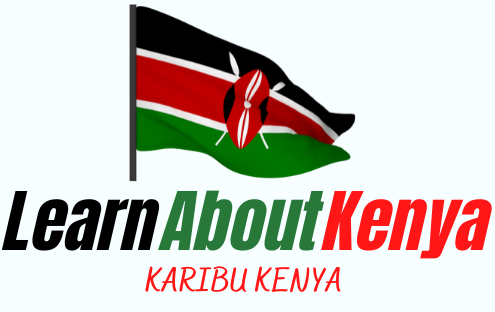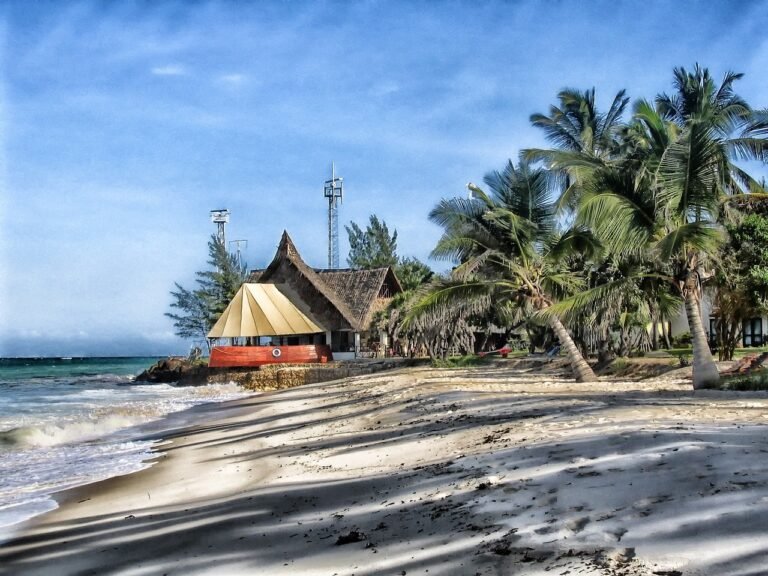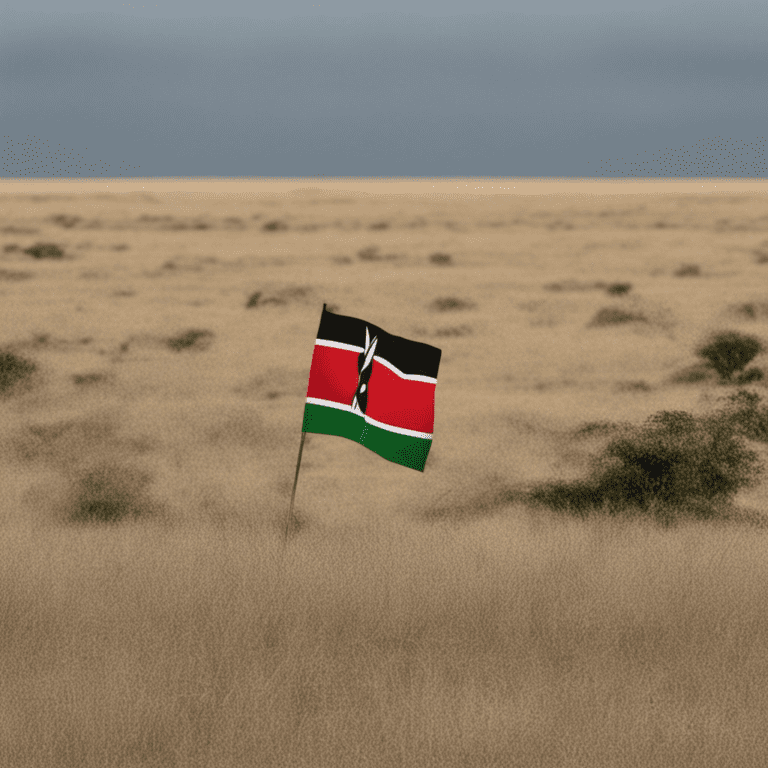How Did Kenya Deal With Environmental And Conservation Issues?
In the face of environmental and conservation challenges, Kenya has emerged as a shining example of proactive efforts and innovative solutions. From tackling deforestation to protecting endangered species, Kenya has implemented various strategies to preserve its rich ecological heritage. By engaging local communities, implementing sustainable initiatives, and establishing protected areas, Kenya has successfully navigated through the complex landscape of environmental conservation. Through a collaborative and inclusive approach, Kenya has not only safeguarded its natural resources but also paved the way for a more sustainable future.
Creation of Protected Areas
National Parks
Kenya has taken significant measures to protect its rich biodiversity and natural resources through the creation of national parks. National parks like Maasai Mara, Amboseli, Tsavo and Aberdare protect a wide range of ecosystems and provide sanctuary for various wildlife species. These parks are managed and protected by government agencies, with designated areas where human activities are restricted to minimize the impact on wildlife and their habitats. The establishment of national parks not only ensures the conservation of Kenya’s iconic animals but also supports ecotourism, contributing to the country’s economy.
Game Reserves
In addition to national parks, Kenya has also established game reserves to provide protected areas for wildlife outside the formal park system. Game reserves like the Ol Pejeta Conservancy and Lewa Wildlife Conservancy play a crucial role in conserving endangered species such as rhinos, elephants, and lions. These reserves often collaborate with local communities to create coexistence models that allow wildlife and people to thrive together. Game reserves are essential for maintaining biodiversity and ensuring the survival of threatened species while promoting sustainable tourism and research opportunities.
Marine Parks and Reserves
Recognizing the importance of marine ecosystems, Kenya has established marine parks and reserves along its coastline and in the Indian Ocean. Marine parks like Watamu National Marine Park and Kisite Mpunguti Marine National Park provide protected areas for coral reefs, seagrass beds, and diverse marine species. These areas are crucial for the survival of marine life and contribute to sustainable fisheries by regulating fishing activities and protecting breeding grounds. The conservation of marine parks also supports tourism, as visitors can snorkel, scuba dive, and engage in other aquatic activities in a pristine environment.
Wildlife Conservation Initiatives
Community-Based Conservation Programs
Kenya has implemented community-based conservation programs that involve local communities in the decision-making processes and benefits of wildlife conservation. This approach recognizes the importance of the communities living near protected areas as stewards of natural resources. By involving them in conservation initiatives, such as wildlife monitoring, anti-poaching efforts, and sustainable resource utilization, these programs foster a sense of ownership and empower local communities to protect their natural heritage. Community-based conservation programs not only support wildlife conservation but also improve livelihoods and promote sustainable development in rural areas.
Anti-Poaching Efforts
Poaching is a significant threat to wildlife populations in Kenya, particularly for iconic species like elephants and rhinos. To combat this issue, Kenya has implemented robust anti-poaching efforts. These efforts involve the deployment of well-trained and equipped ranger teams, employing advanced technology such as drones and GPS tracking systems, implementing intelligence-led operations, and strengthening law enforcement to deter and apprehend wildlife criminals. Additionally, collaboration with international organizations and neighboring countries has been crucial in coordinating efforts to tackle the illegal wildlife trade and dismantle poaching networks.
Conservation Education and Awareness
Education and awareness play a vital role in changing attitudes and behaviors towards wildlife and the environment. Kenya has implemented various conservation education programs that target both children and adults. These programs aim to raise awareness about the importance of conservation, promote sustainable living practices, and instill a sense of responsibility towards the environment. Conservation education is integrated into school curriculums, and innovative techniques like nature walks, community outreach programs, and documentaries are used to engage the public in conservation efforts. By fostering a culture of conservation, Kenya is building a future generation committed to protecting its remarkable natural heritage.
Development of Environmental Policies
Environmental Impact Assessments
Environmental Impact Assessments (EIAs) are essential tools in evaluating the potential environmental consequences of development projects. Kenya has implemented a robust system of EIAs, requiring developers to assess and mitigate the environmental impacts of their activities. This process ensures that projects are carried out sustainably, minimizing harm to ecosystems, biodiversity, and local communities. EIAs enable decision-makers to make informed choices that balance economic development with environmental sustainability, leading to responsible and accountable decision-making.
National Environment Management Authority
The National Environment Management Authority (NEMA) is the principal agency responsible for environmental management in Kenya. NEMA oversees the implementation of environmental policies, regulations, and guidelines across various sectors. It coordinates with other government agencies, local authorities, and stakeholders to promote sustainable development, environmental conservation, and pollution control. NEMA plays a crucial role in coordinating environmental impact assessments, enforcement of environmental laws, and fostering public participation in environmental decision-making processes.
The Green Belt Movement
The Green Belt Movement is an environmental organization founded by Nobel Laureate Wangari Maathai in Kenya. The movement focuses on grassroots-driven initiatives to address environmental challenges, particularly deforestation and land degradation. Through community empowerment, the Green Belt Movement encourages the planting of trees and the restoration of degraded landscapes. This approach not only contributes to carbon sequestration and combating climate change but also provides local communities with sustainable livelihood opportunities through tree-related businesses and ecosystem services. The Green Belt Movement has actively engaged women and youth, promoting gender equality and social inclusion in environmental conservation.
Promotion of Sustainable Agriculture and Forestry
Agroforestry Practices
Agroforestry is a sustainable land management practice that combines the cultivation of trees with agricultural crops or livestock. Kenya has promoted agroforestry practices to address multiple environmental and socioeconomic challenges. Agroforestry systems improve soil fertility, conserve water, provide shade, enhance biodiversity, and sequester carbon. By integrating trees and crops, farmers can diversify their income sources, improve food security, and enhance resilience to climate change. Government programs, research institutions, and NGOs have played a crucial role in promoting agroforestry techniques and providing training and support to farmers.
Afforestation and Reforestation Programs
Kenya has recognized the importance of forests in maintaining ecological balance and water regulation, leading to the implementation of afforestation and reforestation programs. These initiatives focus on planting trees in deforested or degraded areas, thereby restoring forest cover and enhancing ecosystem services. The Kenya Forest Service, along with organizations and community groups, play a vital role in implementing and managing these programs. Afforestation and reforestation contribute to climate change mitigation, soil conservation, wildlife habitat restoration, and sustainable wood supply.
Renewable Energy and Clean Technology Adoption
Geothermal Power
Kenya is internationally recognized for its significant investment in geothermal power generation. Geothermal energy harnesses heat from beneath the earth’s surface to produce electricity, making it a clean and renewable energy source. The Olkaria Geothermal Power Station, located in the Rift Valley, is one of the largest geothermal power plants in the world. Kenya’s commitment to geothermal energy not only reduces reliance on fossil fuels but also contributes to climate change mitigation, energy independence, and job creation in the renewable energy sector.
Solar Power
As a country located near the equator with abundant sunshine, Kenya has immense potential for solar power generation. The government has prioritized solar energy development, particularly for rural electrification, where access to electricity is limited. Solar photovoltaic panels are being installed in off-grid communities, schools, and health centers, improving livelihoods, expanding educational opportunities, and enhancing healthcare services. The promotion of solar power in Kenya not only reduces greenhouse gas emissions but also catalyzes economic development and social progress.
Wind Power
Kenya’s windy corridors, particularly along its northern and coastal regions, have made wind power an attractive option for renewable energy. Wind farms such as Lake Turkana Wind Power, whose capacity is one of the largest in Africa, have been developed to harness wind energy. Wind power contributes to diversifying the country’s energy mix, reducing reliance on fossil fuels, and mitigating climate change. Additionally, wind energy projects have contributed to job creation, infrastructure development, and growth in clean technology industries.
Water Resource Management
Water Conservation and Monitoring
Water scarcity and water pollution are significant challenges in Kenya. To address these issues, the country has implemented water conservation and monitoring programs. These initiatives focus on efficient water use, rainwater harvesting, irrigation management, and monitoring water quality. Public awareness campaigns and education programs promote responsible water consumption and highlight the importance of preserving water resources. Water conservation not only ensures sustainable water supply for domestic and agricultural purposes but also supports freshwater ecosystems and biodiversity.
Water Treatment and Pollution Control
To combat water pollution, Kenya has invested in water treatment infrastructure and enacted stricter regulations to prevent pollutants from entering water bodies. The government, in collaboration with private sector entities, has implemented wastewater treatment systems, solid waste management programs, and pollution control measures. By improving water quality, these initiatives enhance human health, protect aquatic ecosystems, and support sustainable fisheries. Integrated approaches, such as the use of constructed wetlands and innovative technologies, are being adopted to treat and manage various types of water pollution.
Waste Management and Recycling
Waste Separation and Collection
Kenya faces significant challenges in waste management due to rapid urbanization and population growth. To address this issue, waste separation and collection programs have been implemented in major cities and urban areas. These initiatives aim to segregate waste at the source, promote recycling, and minimize waste sent to landfill sites. Public awareness campaigns educate communities on the importance of waste separation and responsible waste disposal practices. By reducing the volume of waste sent to landfills, these programs contribute to environmental protection and public health improvement.
Recycling Centers and Programs
Alongside waste separation and collection efforts, Kenya has established recycling centers and programs. These facilities accept recyclable materials such as plastics, paper, glass, and metal, diverting them from landfills and enabling their transformation into valuable resources. Recycling initiatives not only reduce pressure on natural resources but also create employment opportunities and support the circular economy. The government, in collaboration with NGOs and the private sector, continues to promote recycling and explore innovative waste management solutions.
Plastic Bag Ban
Plastic pollution poses a significant threat to the environment, particularly in countries like Kenya with high plastic consumption. In response to this challenge, Kenya implemented a nationwide ban on plastic bags in 2017. The ban prohibits the manufacture, sale, and use of plastic bags, promoting the use of alternative biodegradable and reusable bags. This measure has significantly reduced plastic waste and its associated environmental impacts, including littering, pollution, and harm to wildlife. The plastic bag ban serves as a paradigm for other countries to address the global plastic pollution crisis.
Eco-Tourism and Sustainable Tourism Development
Promotion of Responsible Tourism Practices
Kenya’s unique landscapes, diverse wildlife, and vibrant culture have positioned the country as a popular destination for tourists. To ensure the sustainability of tourism, Kenya promotes responsible tourism practices that minimize negative environmental and socio-cultural impacts. Efforts are made to educate tourists about ethical behavior, wildlife conservation, and cultural sensitivities. Community-based tourism initiatives are encouraged to involve local communities in tourism activities and share the benefits derived from tourism. By promoting responsible tourism, Kenya aims to balance economic development with environmental protection and cultural preservation.
Community-Based Tourism Initiatives
Community-based tourism initiatives focus on empowering local communities to participate in and benefit from tourism activities. These initiatives encourage communities to establish eco-lodges, cultural centers, and guided tours that provide authentic experiences for tourists while creating economic opportunities for locals. Community-based tourism promotes cultural preservation, supports sustainable livelihoods, and fosters a sense of pride and ownership over natural and cultural heritage. By involving communities in tourism development, Kenya ensures that tourism benefits are shared equitably, enhancing overall sustainable development.
International Cooperation and Agreements
United Nations Environment Programme
As the host country of the United Nations Environment Programme (UNEP), Kenya has played a significant role in international environmental cooperation. UNEP works towards promoting sustainable development, environmental protection, and the conservation of natural resources. Kenya actively collaborates with UNEP on various initiatives, including capacity building, policy development, and the implementation of multilateral environmental agreements. Through its cooperation with UNEP, Kenya contributes to global efforts to address environmental challenges and achieve sustainable development goals.
Convention on Biological Diversity
Kenya is a party to the Convention on Biological Diversity (CBD), an international treaty aimed at conserving biological diversity, promoting sustainable use of its components, and ensuring fair and equitable sharing of benefits. Kenya’s commitment to the CBD is evident through its efforts to conserve biodiversity and implement national biodiversity strategies and action plans. By collaborating with other CBD member countries, Kenya works towards conserving ecosystems, protecting endangered species, and enhancing the sustainable management of natural resources.
Paris Agreement
The Paris Agreement is an international treaty on climate change that aims to limit global warming and mitigate its impacts. Kenya is a signatory to the Paris Agreement and has committed to reducing greenhouse gas emissions, enhancing climate resilience, and contributing to global climate change efforts. The country has developed a national climate change action plan and implements climate change adaptation and mitigation measures. Kenya’s participation in the Paris Agreement reflects its commitment to addressing climate change and transitioning towards a low-carbon, climate-resilient economy.
Challenges and Future Perspectives
Population Growth and Urbanization
Kenya’s population is rapidly growing, posing challenges for environmental conservation and sustainable development. Increased urbanization leads to the expansion of infrastructure, loss of natural habitats, increased demand for resources, and additional pressure on ecosystems. Addressing population growth and urbanization requires comprehensive urban planning, improved access to family planning services, sustainable land use practices, and investments in renewable energy and infrastructure. Balancing population growth with environmental sustainability is crucial for the long-term prosperity of Kenya.
Climate Change and Adaptation
Kenya, like many other countries, is experiencing the impacts of climate change, including unpredictable weather patterns, increased frequency of extreme weather events, and rising sea levels. To adapt to these changes, Kenya has been implementing climate change adaptation measures, such as enhancing water resource management, promoting drought-resistant agriculture, and developing resilient infrastructure. International collaboration, knowledge sharing, and the mobilization of climate finance are vital for supporting Kenya’s efforts in climate change adaptation and building resilience to future climate risks.
Illegal Wildlife Trafficking
Illegal wildlife trafficking poses a significant threat to Kenya’s biodiversity and natural heritage. Poaching and the illegal trade of wildlife products undermine conservation efforts, threaten endangered species, and fuel organized crime. Kenya continues to tackle this challenge through coordinated law enforcement efforts, intelligence sharing, and international cooperation. Strengthening legislation, increasing penalties for wildlife crimes, supporting community-based conservation initiatives, and raising awareness about the impacts of wildlife trafficking are crucial for combating this illicit trade and protecting Kenya’s precious wildlife.







